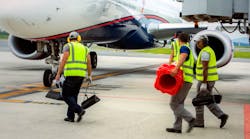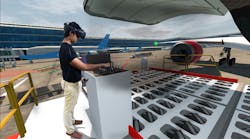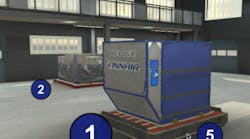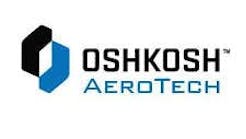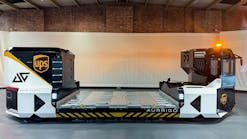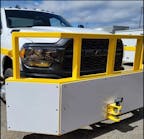ANA Introduces Virtual Reality Training for Ground Staff
In its ongoing commitment to technological innovation, ANA Group introduced virtual reality (VR) into its training procedures for ground handling staff. This integration not only aims to improve efficiency and safety but also elevate the quality of safe, comfortable travel for passengers.
Integral to ANA Group operations, ground handling staff are tasked with a wide range of responsibilities, including connecting jet bridges to aircraft, handling passenger luggage and assisting with aircraft pushback.
Introducing ∀TRAS
On Oct. 4, 2024, in collaboration with extended reality (XR) production company Tsumiki Seisaku Co., Ltd, ANA announced the introduction of ∀TRAS (pronounced ‘atlas’), a VR ground handling simulator. The simulator is equipped with training modules for ground handling staff to perform a variety of tasks.
Masanori Nagaoka from ANA’s Ground Handling Planning Department, Junichi Kato, and Chiaki Shimomura, training instructors from ANA Airport Services Human Resources Division, demonstrated the new technology during a media event held at Haneda Airport.
First used by the Haneda Airport team earlier this month, ∀TRAS relies on a variety of equipment, including a dedicated computer and VR headset. The vehicle driving hardware includes a set of pedals, steering wheel, joystick and more.
The simulator includes practice modules for pushback and towing, connecting passenger jet bridges, aircraft deicing and anti-icing, operation of other ground handling equipment and more.
Unlike traditional training methods requiring physical aircraft and vehicles, the simulator offers versatile learning modules for each type of aircraft operated by ANA, from the B737 to the A380.
“Smaller airports may not always have aircraft on ground for staff to train with, making training schedules difficult to incorporate into operations,” says Nagaoka. “Utilizing ∀TRAS, we’re able to overcome these difficulties.”
While the program will be carried out with ∀TRAS using VR modules, all trainees will still receive traditional hands-on training. The VR training supplements their understanding of the equipment mechanisms and characteristics before their hands-on experience, fostering a deeper knowledge of procedures.
In addition to replicating aircraft and tasks, ∀TRAS also adjusts for a variety of different scenarios including the time of day, weather conditions and unexpected operational challenges. By simulating weather conditions such as clear, rainy, cloudy and snowy, and introducing random unsafe situations, the simulator enhances the ground handling staff’s preparedness and responsiveness in all scenarios.
”The introduction of ∀TRAS not only enhances passenger and crew safety but also improves operational efficiency among fleets and staff,” says Nagaoka.
Unlike traditional training methods, requiring numerous instructors and assistants, VR implementation streamlines the process by focusing solely on the trainee and in result increases operational efficiency.
By replacing half of the traditional training procedure with ∀TRAS’ VR simulator, the team estimates they can reduce training time by up to 40 percent.
Future of Training
Looking beyond Haneda Airport, ANA will expand the availability of ∀TRAS to other gateways throughout Japan. In the future, the team hopes to expand the use of VR training by adding additional content, modules and airport locations, better suited to the needs of each department.
ANA Group hopes this streamlined training process will not only improve efficiency and training speed, but increases the skills of staff to better handle the growth in tourism to Japan.
